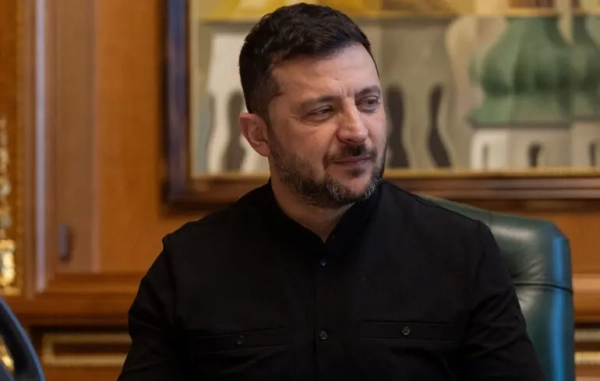
Reader Andrew Perrin writes: While I realize political campaigns need money, the only messages I seem to get from political campaigns are pleas for money, especially when they’re trying to hit “end of month deadlines” — which I have no idea why that’s important. I’d much rather receive texts or emails about policy ideas, what the candidate would do if they won, or maybe even what they’re doing with the money they’re receiving. Am I the only one that is frustrated by candidates only seeming to care about money when talking to their would-be constituents?
It’s not just you: A lot of people don’t like being repeatedly asked for money, even if they agree with the cause their donation would support. But as frustrating as the deluge of requests for campaign donations over text and email may be, there is a reason behind these fundraising tactics.
For one, as you noted, campaigns desperately need the money. It’s become incredibly expensive to run a successful campaign, especially when challenging an incumbent. That money may make a difference in helping introduce a candidate and their positions to the electorate.
Sign up for the Explain It to Me newsletter
The newsletter is part of Vox’s Explain It to Me. Each week, we tackle a question from our audience and deliver a digestible explainer from one of our journalists. Have a question you want us to answer? Ask us here.
And the other thing is: Asking people for money — even in hyperbolic ways — works. Research suggests that people are much more likely to give to charities when they’re asked to do so. Recent history suggests the same is true of political campaigns. Vice President Kamala Harris has been aggressive in soliciting donations; she brought in $615 million in the first six weeks after President Joe Biden dropped out of the race. Her campaign has not yet announced its fundraising haul for September, but she is expected to continue to outpace Trump.
That’s not to say that candidates don’t try to engage with their constituents on the issues, sometimes even within their communications asking for donations. A candidate’s approach to messaging comes down to individual style. But when an election is tight, and the odds are against a candidate, money matters a lot — and candidates may choose to prioritize fundraising pleas over other types of communication.
So, just how expensive is it to run a campaign? And how did we end up with such costly elections?
In Texas, where I’m based, the Senate campaign between Democrat Colin Allred and Republican incumbent Ted Cruz has been incredibly costly already. Allred spent $37 million on aired ads as of mid-September, almost three times what Cruz, the incumbent, had spent at that point. That spending has been largely powered by small donors, with an average donation amount of about $35. National Democrats think there’s a chance that Allred can win, but he will likely have to spend even more to do so in what is still a red state, despite the fact that Cruz has consistently low approval ratings.
The high cost of running is partially a function of the fact that Texas is a large state with a population of 30 million people, 254 counties, and 20 different media markets. The money Allred is raising has to support not just ads but also campaign staffers and volunteer efforts, including organizing events, rallies, data-sharing, phone banks, block walking, voter registration, and other get-out-the-vote efforts across the state.
But high spending is also a result of the Supreme Court’s 2010 ruling in Citizens United v. Federal Election Commission. That decision allowed corporations and outside groups to spend unlimited money on elections, often via super PACs — a kind of fundraising vehicle — that operate independently of campaigns.
Since Citizens United, spending on elections up and down the ballot has gone way up: In 2008, the last presidential election before the decision, spending on congressional campaigns totaled about $3 billion, adjusted for inflation; in 2020, also a presidential election year, it totaled $10 billion.
Research suggests that challengers benefit more from campaign spending than incumbents, and that for any candidate, early spending is more effective than late spending — which may partly motivate campaigns’ sense of urgency when they solicit donations from voters.
Incumbents don’t benefit as much from campaign spending because voters often already know who they are and what they stand for. Usually, there isn’t much room to change voters’ minds about that.
Of course, the kinds of ardent partisans who often receive requests to donate may appreciate efforts to try — like through engagement on policy — but generally, the focus on voter outreach during elections is about keeping money flowing and wooing more persuadable voters.
Does bombarding people with fundraising appeals actually work?
If digital advertising firms weren’t successful in soliciting donations by asking repeatedly, they wouldn’t do it. That said, there’s a growing divide in Democratic circles about the best way to go about it.
While fundraising requests focused on urgency are a tried and true method, some Democrats are beginning to ask if it might be better to, as you suggested, bring in a little more policy talk.
Of late, some firms have been criticized for overly aggressive fundraising tactics. The Democratic firm Mothership Strategies, for instance, had a big presence in the 2022 midterms and became infamous for sensationalist fundraising campaigns falsely claiming that Republicans were forcing Transportation Secretary Pete Buttigieg to resign and that voter donations could help “DESTROY Trump’s extremist Supreme Court.”
Those tactics generated a lot of money — but they also earned blowback. Democratic candidates had largely cut ties with the firm by April 2023. Jake Lipsett, a founder of the firm, defended the firm’s strategies to Politico later that year, saying that they were able to generate a lot of money and that it was “beneficial for the Democratic Party and the progressive movement because it’s having such a large impact on races across the board.”
“If you bombard people with spam emails and texts, if you lie to them and say that there are fake octuple donor matches, if you send them emails and say the sky is falling, that works,” said Zack Malitz, a Democratic consultant who worked on Beto O’Rourke’s 2018 Senate campaign in Texas. “You can scare people into giving money that way. But it does long-term damage to the credibility of Democrats.”
Is there a better way to fundraise?
Hector Sigala, the cofounder of Middle Seat, another Democratic digital ad firm, said that there’s a better way to go about communicating with donors and asking for their support, financial and otherwise.
That can involve describing a candidate’s positions and being honest with voters about the role their donations play. Some, but not all, candidates are already doing this.
Sigala’s firm sent out an email from Rep. Alexandria Ocasio-Cortez (D-NY) that explicitly acknowledged the “scare tactics” some politicians engage in to get voters to donate and said that’s not what her campaign is about: “Instead of guilt tripping you for not donating enough, we want our emails to provide value to you. We try to send out informative, educational content.”
The firm also ran an email campaign for Sen. John Fetterman (D-PA) in which he explained the significance of his tattoos, linking the artwork to Fetterman’s policy positions: They included the dates on which people were killed, some via gun violence, in the city of Braddock while he served as mayor. He outlined how he helped address violence as mayor and said he would similarly fight for “every Pennsylvanian” — with the help of grassroots donors.
These kinds of communications can deliver record-breaking fundraising numbers, Sigala said.
“We’re treating our supporters like smart people [who] really give a damn about what we’re talking about,” he said. “It just works a lot better than ‘midnight deadlines,’ fake matches, and ‘the sky is falling.’”
That said, if my inbox and texts are any indication, Sigala’s firm remains the exception.
This story was featured in the Explain It to Me newsletter. Sign up here. For more from Explain It to Me, check out the podcast. New episodes drop every Wednesday.
Source: vox.com






